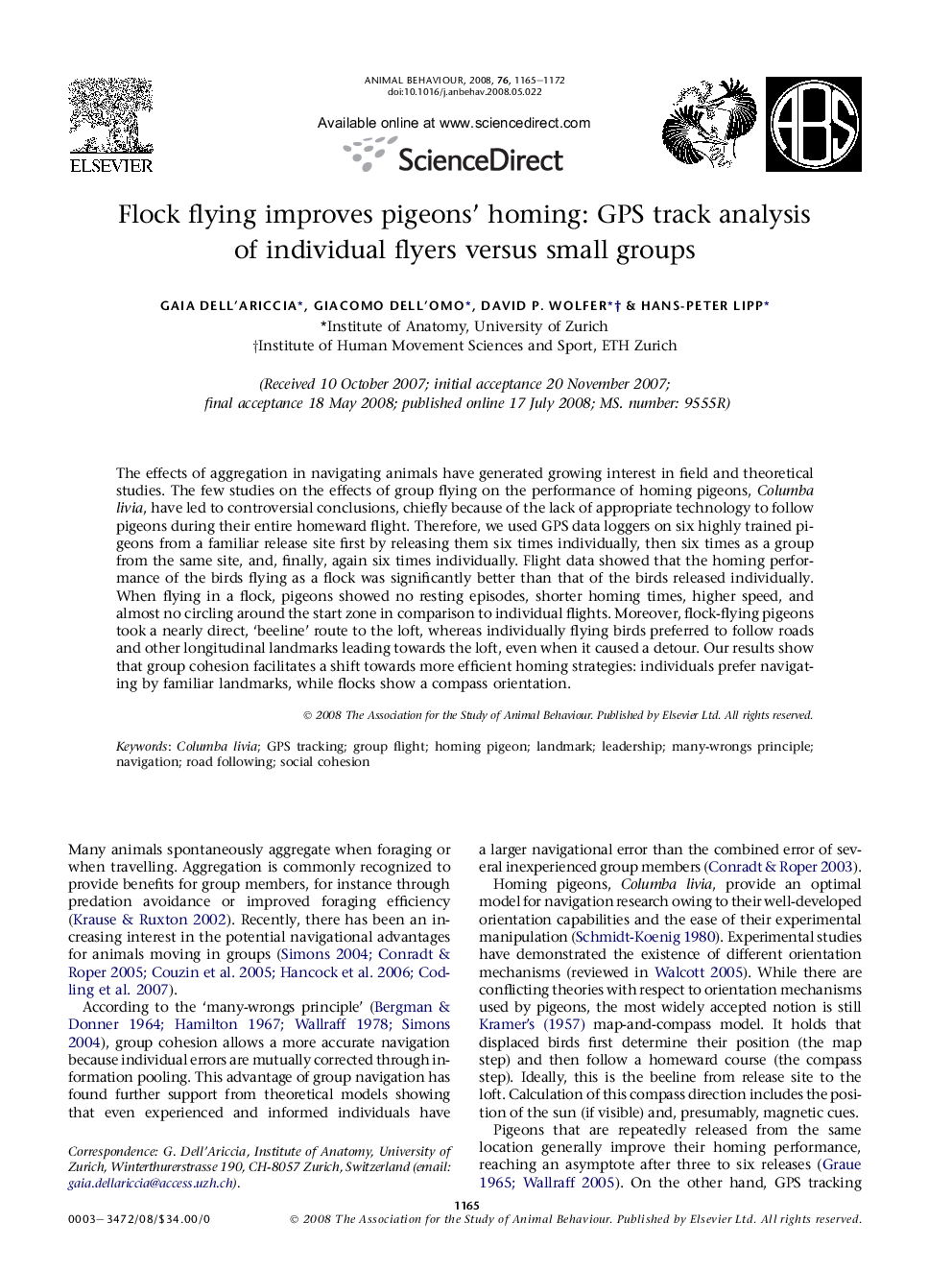| Article ID | Journal | Published Year | Pages | File Type |
|---|---|---|---|---|
| 2418755 | Animal Behaviour | 2008 | 8 Pages |
The effects of aggregation in navigating animals have generated growing interest in field and theoretical studies. The few studies on the effects of group flying on the performance of homing pigeons, Columba livia, have led to controversial conclusions, chiefly because of the lack of appropriate technology to follow pigeons during their entire homeward flight. Therefore, we used GPS data loggers on six highly trained pigeons from a familiar release site first by releasing them six times individually, then six times as a group from the same site, and, finally, again six times individually. Flight data showed that the homing performance of the birds flying as a flock was significantly better than that of the birds released individually. When flying in a flock, pigeons showed no resting episodes, shorter homing times, higher speed, and almost no circling around the start zone in comparison to individual flights. Moreover, flock-flying pigeons took a nearly direct, ‘beeline’ route to the loft, whereas individually flying birds preferred to follow roads and other longitudinal landmarks leading towards the loft, even when it caused a detour. Our results show that group cohesion facilitates a shift towards more efficient homing strategies: individuals prefer navigating by familiar landmarks, while flocks show a compass orientation.
